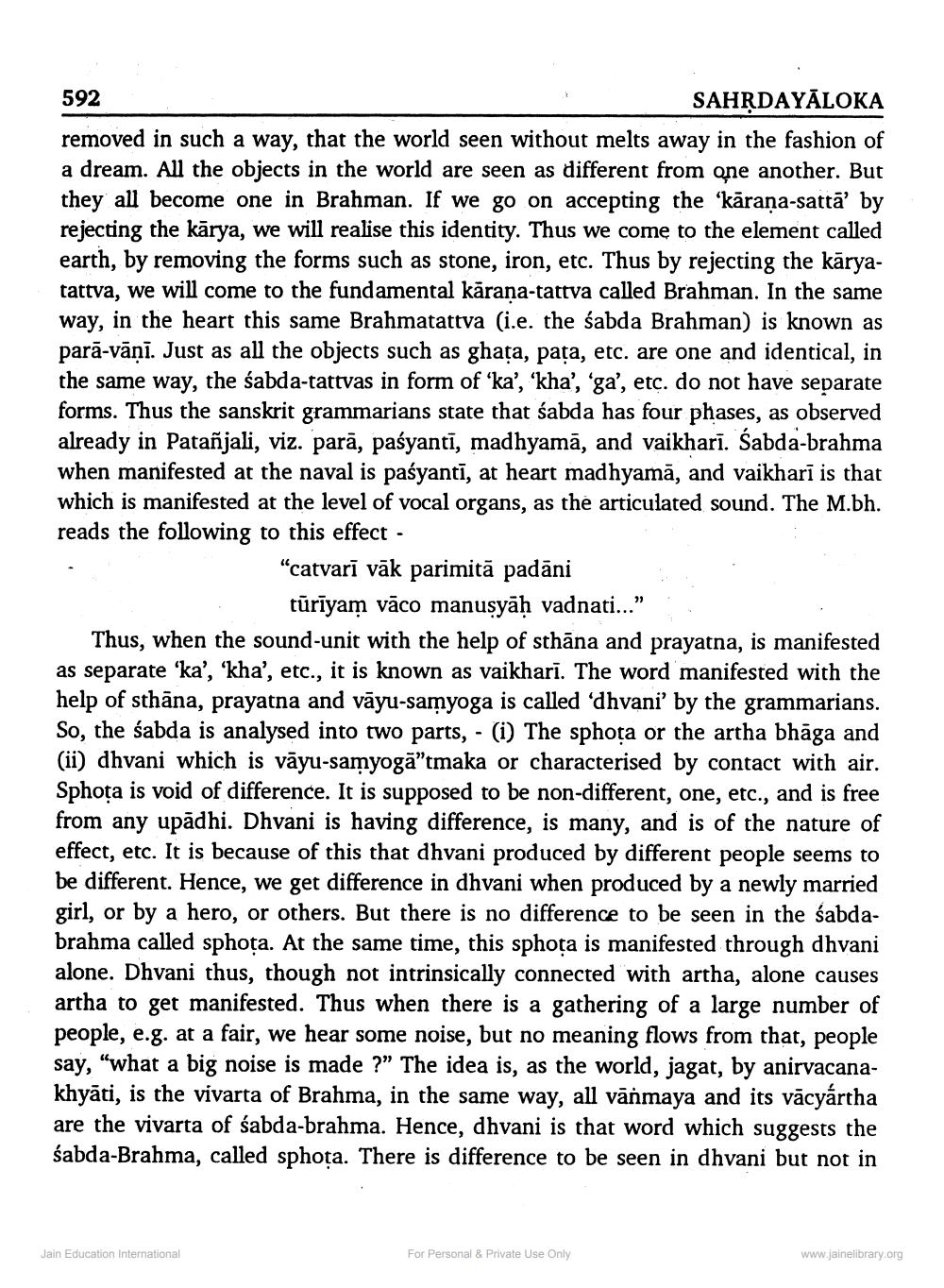________________
rejecting the ka
592
SAHRDAYĀLOKA removed in such a way, that the world seen without melts away in the fashion of a dream. All the objects in the world are seen as different from one another. But they all become one in Brahman. If we go on accepting the 'kārana-sattā' by
ing the kārya, we will realise this identity. Thus we come to the element called earth, by removing the forms such as stone, iron, etc. Thus by rejecting the kāryatattva, we will come to the fundamental kārana-tattva called Brahman. In the same way, in the heart this same Brahmatattva (i.e. the śabda Brahman) is known as parā-vānī. Just as all the objects such as ghata, pata, etc. are one and identical, in the same way, the sabda-tattvas in form of 'ka', 'kha', 'ga', etc. do not have separate forms. Thus the sanskrit grammarians state that śabda has four phases, as observed already in Patañjali, viz. parā, paśyantī, madhyamā, and vaikharī. Sabda-brahma when manifested at the naval is paśyantī, at heart madhyamā, and vaikharī is that which is manifested at the level of vocal organs, as the articulated sound. The M.bh. reads the following to this effect -
"catvarī vāk parimitā padāni
tūrīyam vāco manusyāḥ vadnati..." Thus, when the sound-unit with the help of sthāna and prayatna, is manifested as separate 'ka', 'kha', etc., it is known as vaikhari. The word manifested with th help of sthāna, prayatna and vāyu-samyoga is called 'dhvani' by the grammarians. So, the sabda is analysed into two parts, - (i) The sphota or the artha bhāga and (ii) dhvani which is vāyu-samyoga"tmaka or characterised by contact with air. Sphota is void of difference. It is supposed to be non-different, one, etc., and is free from any upādhi. Dhvani is having difference. is many, and is of the nature of effect, etc. It is because of this that dhvani produced by different people seems to be different. Hence, we get difference in dhvani when produced by a newly married girl, or by a hero, or others. But there is no difference to be seen in the sabda
led sphota. At the same time, this sphota is manifested through dhvani
Dhvani thus, though not intrinsically connected with artha, alone causes artha to get manifested. Thus when there is a gathering of a large number of people, e.g. at a fair, we hear some noise, but no meaning flows from that, people say, "what a big noise is made ?” The idea is, as the world, jagat, by anirvacana khyāti, is the vivarta of Brahma, in the same way, all vārmaya and its vācyártha are the vivarta of śabda-brahma. Hence, dhvani is that word which suggests the śabda-Brahma, called sphoța. There is difference to be seen in dhvani but not in
Jain Education International
For Personal & Private Use Only
www.jainelibrary.org




